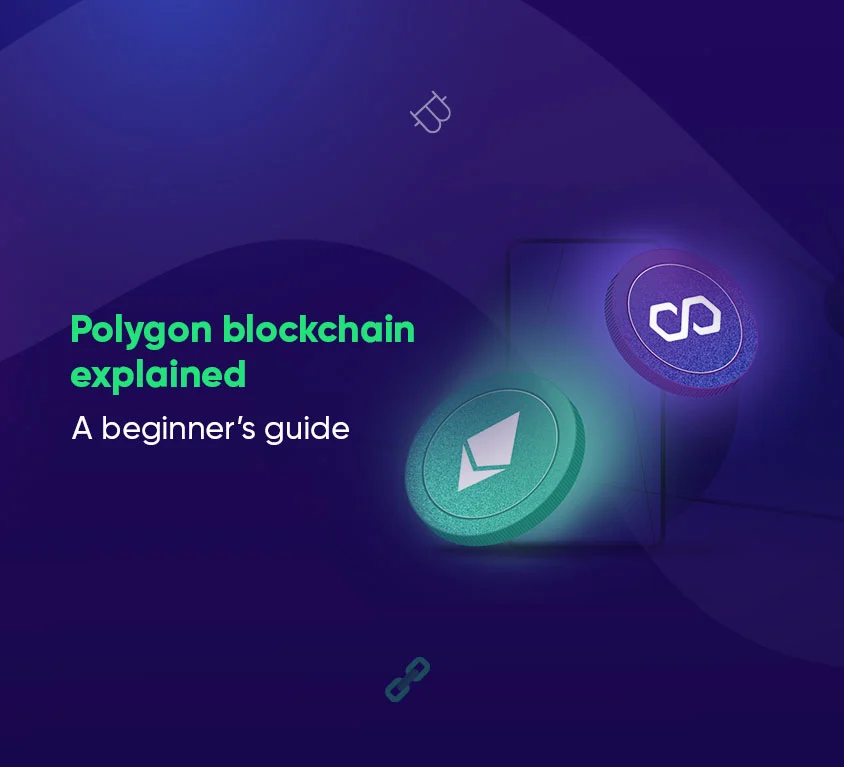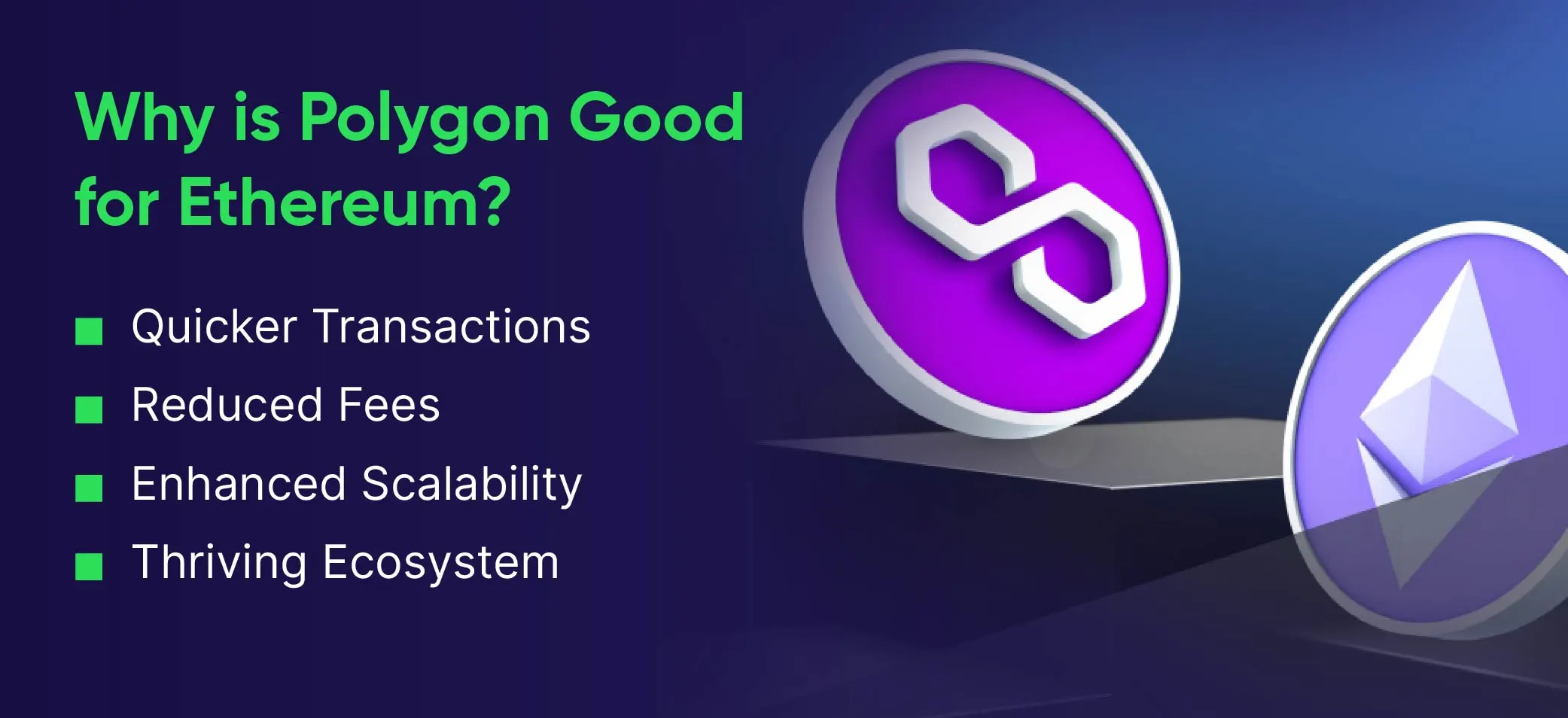
Introduction
Web3 & Blockchain Consultancy :
Polygon Blockchain Explained: Beginner’s Guide
These days, blockchain is not a buzzword. Everyone is aware of the purpose of blockchain and how it helps businesses. In actuality, this is a ground-breaking technology that is changing our understanding of and interactions with digital transactions. For those new to the quickly evolving field of blockchain technology, familiarity with platforms such as Polygon is particularly important. To simplify the complex nature of the Polygon, this guide will overview its features, advantages, and place in the larger blockchain ecosystem.What is Polygon?
Polygon is a Layer 2 scaling solution that was previously called MATIC. This blockchain aims to enhance the capabilities of the Ethereum blockchain. It acts as a foundation for creating “sidechains,” or “child chains,” which are blockchain networks that are compatible with Ethereum. While keeping safe connections to the Ethereum mainnet, these sidechains run on their own. Serving as a bridge to get over scalability issues. Moreover, Polygon offers decentralized apps and services in a scalable and user-friendly environment. It reduces network load and transaction costs to less than a cent by handling transactions on a different blockchain that is compatible with Ethereum and then posting them back to the main Ethereum blockchain after processing. Formerly known as the Matic network, Polygon provides a simple framework that allows both new and established blockchain projects to expand on Ethereum without running into scalability problems. Users can interact with any decentralized application without worrying about network congestion.Polygon Blockchain Explained
The blockchain field is constantly changing and there are a lot of blockchain platforms that are coming up day by day. However, Polygon has become the leader in the race to make Ethereum more scalable. Let’s dispel the myths and misconceptions surrounding this ground-breaking blockchain solution as we explore Polygon Blockchain in detail.Vision and Leadership: Who’s in Charge?
Polygon’s success can be attributed to its talented and committed development team. There are three founders of Polygon.- Co-founder and CEO Jaynti Kanani
- Co-founder and chief operating officer Sandeep Nailwal
- Co-founder and chief product officer Anurag Arjun
Are MATIC and Polygon the Same Thing?
Yes, Polygon and MATIC are the same blockchain project. The token name at the beginning was MATIC. However, the rebranding that followed to Polygon represents the project’s broader scope, which goes beyond the MATIC token and includes a variety of scaling solutions. The project’s evolution and dedication to offering a full suite of solutions within the larger blockchain ecosystem are reflected in the change in nomenclature.How Polygon Blockchain Works?
Polygon is a monument to creativity and flexibility as we traverse the complex terrain of blockchain technologies. Polygon is a company that is dedicated to scalability and has a strong leadership team. They are shaping the future of decentralized ecosystems. Moreover, when we talk about its function, Polygon blockchain operates as a Layer 2 scaling solution. It amplifies Ethereum’s features by establishing a network of sidechains, also known as “child chains.” These sidechains are fully Ethereum-compatible, supporting the same smart contracts and assets as the Ethereum mainnet. The primary goal is to address scalability issues and provide a user-friendly environment for decentralized applications (dApps) development services. The functioning of Polygon involves these sidechains working independently, allowing for faster transaction confirmation times and reduced fees compared to the Ethereum mainnet. Developers can seamlessly deploy their dApps on Polygon while benefiting from the security and decentralization of the Ethereum network.Why is Polygon Good for Ethereum?
Polygon serves as an enhancement for Ethereum as it tackles many scalability challenges. The introduction of sidechains allows for quicker transaction confirmation times and reduced fees, significantly improving the overall user experience within the Ethereum ecosystem. Here are some of the reasons mentioned below why is polygon blockchain good for Ethereum;
- Quicker Transactions: Polygon’s Layer 2 scaling solutions provide faster transaction confirmation times compared to the Ethereum mainnet, ensuring a more efficient user experience.
- Reduced Fees: Users benefit from significantly reduced transaction fees on Polygon, making microtransactions and regular dApp usage more affordable.
- Enhanced Scalability: Polygon’s sidechains alleviate Ethereum’s scalability challenges, allowing dApps to scale seamlessly with growing user adoption.
- Thriving Ecosystem: Polygon has garnered strong developer support, fostering a thriving ecosystem of dApps and projects. This support contributes to the continuous growth and innovation within the Polygon network.
Polygon (MATIC) vs. Ethereum Layer 1
A comparative analysis between Polygon vs Ethereum Layer 1 reveals that Polygon’s Layer 2 solutions address Ethereum’s scalability limitations.- Scalability: Polygon’s Layer 2 solutions offer a more scalable environment for dApps to operate efficiently. Ethereum, while groundbreaking, faces congestion issues during peak usage.
- Transaction Speed: Polygon outpaces Ethereum in terms of transaction speed, thanks to its sidechain architecture. Ethereum’s Proof of Work (PoW) consensus can result in slower confirmation times, particularly during network congestion.
- Cost and Fees: Polygon’s cost-effective transactions make it an attractive choice for users seeking affordable interactions with dApps. Ethereum’s gas fees can be considerably higher during peak periods, impacting user affordability.
What Makes Polygon Better Than Ethereum Layer 1?
Choosing Polygon over Ethereum Layer 1 is primarily based on several benefits that developers and users will find valuable:
- Streamlined Experience: Using Polygon requires utilizing speed. Layer 2 scaling solutions from Polygon guarantee quick transaction confirmation, giving users a smooth and quick experience. This acceleration has the potential to greatly increase user satisfaction in a world where time is critical.
- Meet Increasing Demands: Polygon’s ability to address Ethereum’s scalability issues is one of its most notable features. Polygon makes sure that decentralized applications (dApps) can scale with ease by utilizing creative sidechains. Polygon is resilient and offers a scalable infrastructure without sacrificing performance as user adoption rises.
- Ecosystem Fueled by Developer Support: Polygon Blockchain is an ecosystem, not just a platform. The robust backing from developers has fostered a climate in which decentralized applications (dApps) and initiatives thrive. By selecting Polygon, you’re joining a community that prioritizes creativity, teamwork, and the ongoing development of the blockchain environment.
- Reduced Fees: Polygon understands that affordability is important. Comparing Polygon to Ethereum Layer 1, users benefit from much lower transaction fees. This financial benefit makes the platform economically accessible to everyone, especially for microtransactions and frequent use of decentralized applications (dApps).
Doesn’t Ethereum 2.0 Kill the Need for Polygon?
What is Ethereum 2.0?
→ Ethereum 2.0 is an upgrade to the existing network, and Polygon complements these improvements by providing practical scaling solutions. The introduction of Ethereum 2.0, which primarily aims to tackle issues related to scalability, could prompt inquiries regarding the applicability of systems such as Polygon. Nonetheless, Polygon’s strong ecosystem and tested solutions help it to remain significant. Polygon’s rivals in the Layer 2 scaling market provide different strategies for dealing with scalability problems. Moreover, It is to be believed that Polygon will not disappear as achieving security, decentralization, and scalability is impossible. Ethereum currently excels in these areas but needs to be scaled to L2 or improved. L1 will continue as a security and decentralization source, while L2s add features like scalability and privacy. Examining these substitutes aids in comprehending the variety of choices for improving blockchain networks. Let’s have a look at the table that outlines the justification for the need for both Ethereum 2.0 and Polygon:| Aspect | Ethereum 2.0 | Polygon |
|---|---|---|
| Scalability Challenge | Addresses the scalability challenge through a shard-based system. | Provides practical scaling solutions with independent sidechains. |
| Consensus Mechanism | Transitioning from Proof of Work (PoW) to Proof of Stake (PoS) for improved efficiency. | Utilizes a customized Proof of Stake (PoS) consensus mechanism. |
| Network Architecture | Shifts to a shard-based system to enhance overall network scalability. | Implements Layer 2 scaling solutions, reducing congestion on the mainnet. |
| Smart Contracts | Continues to support and enhance existing smart contract functionality. | Maintains compatibility with Ethereum’s smart contracts, ensuring seamless integration. |
| Community Support | Growing community engagement and anticipation for improved network performance. | Well-established ecosystem with a dedicated and active community. |
| Security Enhancement | Enhancements in security through the transition to PoS. | Maintains a high level of security with its unique consensus mechanism. |
| User Experience | Aims to improve user experience by reducing transaction times and costs. | Enhances user experience through quicker transaction confirmation and lower fees. |
- This table justified that Ethereum 2.0 and Polygon are integral parts of the blockchain ecosystem because they each tackle the scalability issue differently.
- The switch to a PoS and shard-based system in Ethereum 2.0 is in line with its objective of improving the network as a whole.
- While Polygon’s Layer 2 solutions provide instant relief by lowering congestion and improving user experience.
- Collectively, they enhance the development and effectiveness of blockchain systems.